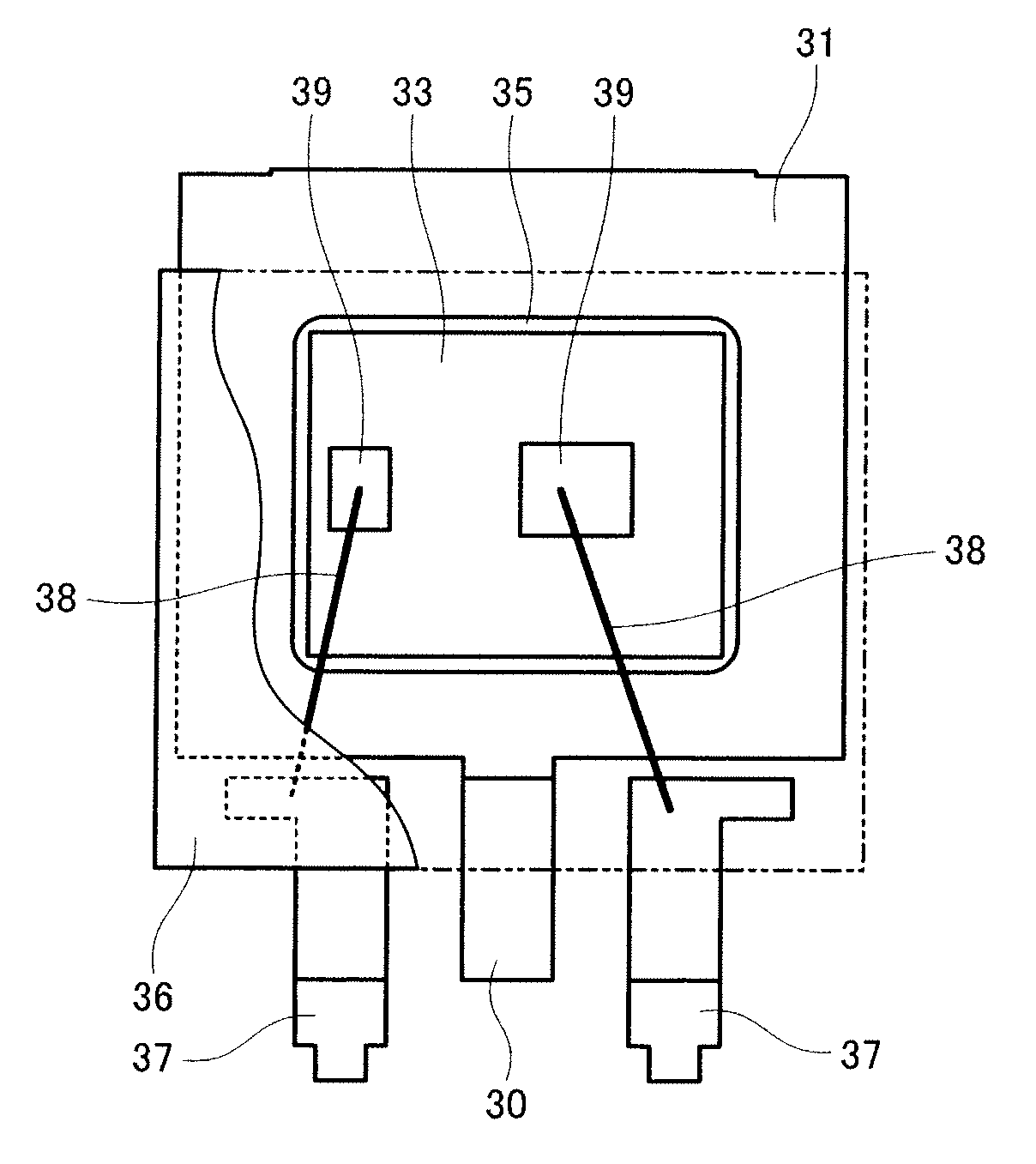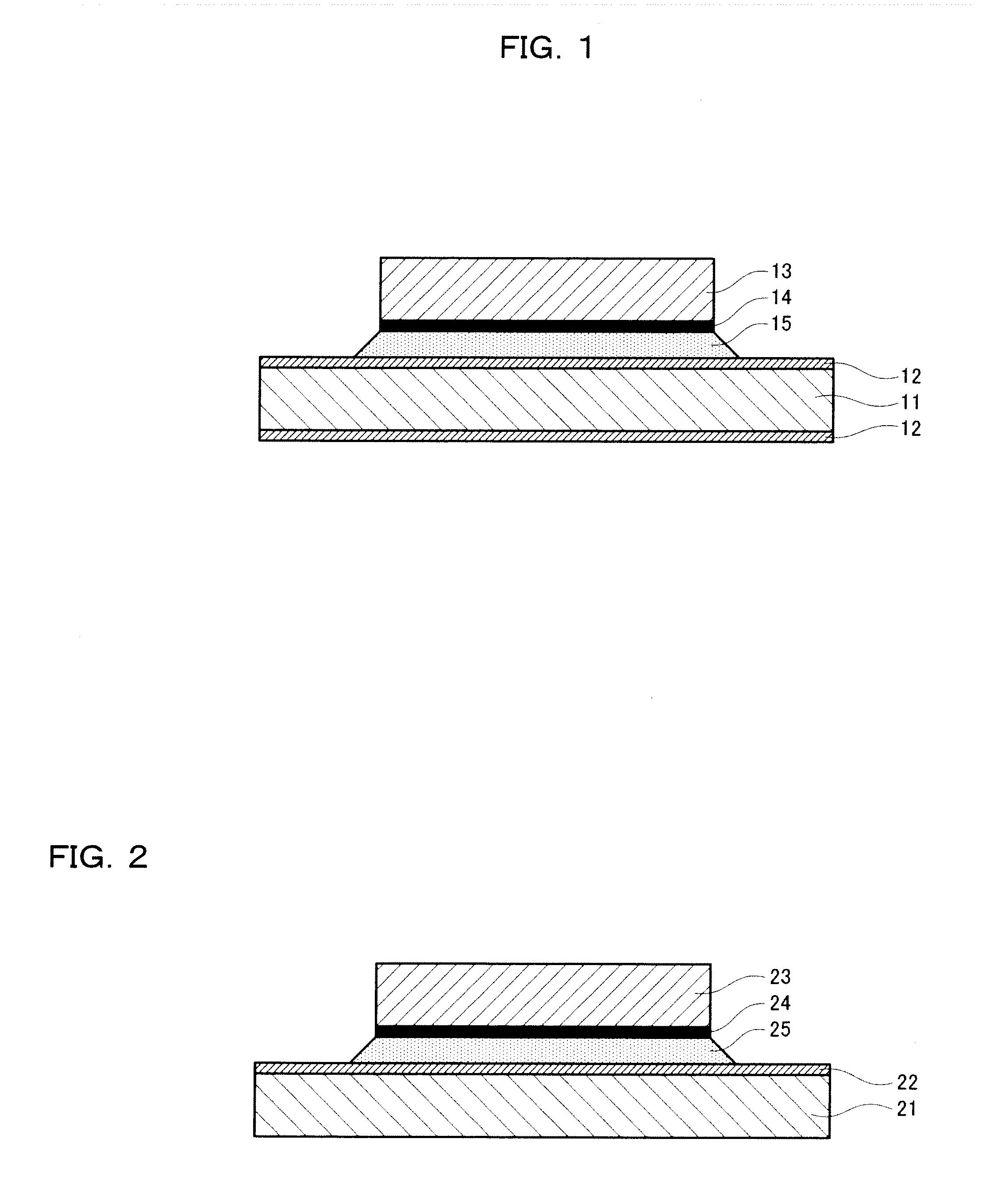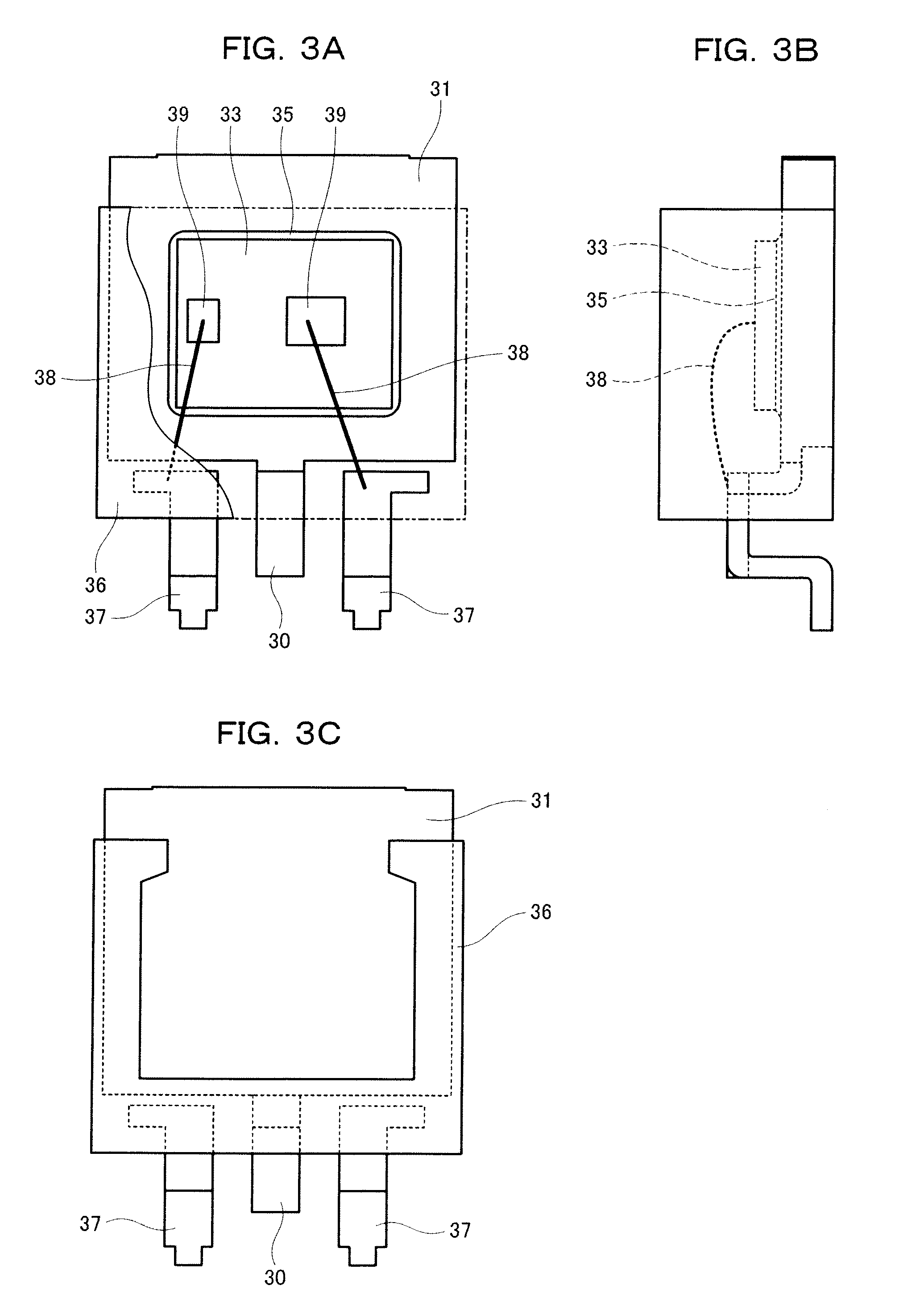Semiconductor device and die bonding material
a semiconductor device and die bonding technology, applied in semiconductor devices, solid-state devices, basic electric elements, etc., can solve the problems of mechanical strength degradation of joints, increased production costs, and insufficient die bonding materials of lead-tin solder and tin-antimony solder, so as to secure the mountability and electrical reliability of semiconductor devices, the effect of good melting temperatur
- Summary
- Abstract
- Description
- Claims
- Application Information
AI Technical Summary
Benefits of technology
Problems solved by technology
Method used
Image
Examples
first embodiment
[0033]A bonding material which is a die bonding material for bonding a semiconductor element according to the present embodiment contains an alloy predominantly composed of Bi. The alloy contains 0.8 wt % to 10 wt % of Cu and 0.02 wt % to 0.2 wt % of Ge. It is known that a melting point increases as a larger amount of Cu having a melting point of 1083° C. is applied to the alloy predominantly composed of Bi having a melting point of 270° C. In order to evenly apply 0.8 wt % to 10 wt % of Cu as an alloy, it is necessary to prevent Cu particles from growing in size by temporarily melting Cu in a melting pot at 1200° C. and increasing the cooling speed. Further, a preferable Cu content is 0.8 wt % to 3.8 wt % and a preferable Ge content is 0.02 wt % to 0.05 wt %. When the alloy predominantly composed of Bi is a ternary alloy (an alloy composed of three elements), the residue other than Cu and Ge is only composed of Bi.
[0034]Such a bonding material has a melting temperature of at least ...
second embodiment
[0046]A bonding material that is a die bonding material according to the present embodiment contains an alloy predominantly composed of Bi. The alloy contains 0.8 wt % to 10 wt % of Cu, 0.02 wt % to 0.2 wt % of Ge, and 0.02 wt % to 0.08 wt % of Ni. As in the first embodiment, a preferable Cu content is 6 wt % to 10 wt % and a preferable Ge content is 0.02 wt % to 0.05 wt %. Further, a Ni content of 0.02 wt % to 0.05 wt % is preferable. By adding Ni thus, shock resistance becomes higher than in the bonding material of the first embodiment.
[0047]The shock resistance can be evaluated by a test in which a weight of 60 g is caused to collide, from a height of 180 mm, against a side of a chip capacitor having a size of 1.6 mm×0.8 mm.
[0048]The shock resistance test was conducted using the chip capacitor having a joint bonded with a ternary alloy (Bi-0.5% Cu-0.04% Ge) containing 99.46 wt % of Bi, 0.5 wt % of Cu, and 0.04 wt % of Ge. As a result, the joint of the chip capacitor was broken. W...
third embodiment
[0054]According to a semiconductor device of the present embodiment, when a semiconductor element having at least one semiconductor element backside electrode is mounted on a semiconductor substrate having at least one semiconductor substrate electrode, the semiconductor element and the semiconductor substrate are bonded to each other with the bonding material, which is a die bonding material according to one of the first and second embodiments, such that the semiconductor element backside electrodes and the corresponding semiconductor substrate electrodes are electrically connected to each other.
[0055]The semiconductor element is not particularly limited. For example, a semiconductor device for power may be used. Further, the semiconductor element may be a module as well as a single unit and particularly, a surface-mount device may be used.
[0056]The present invention is especially suitable when a semiconductor element for power is obtained with a size of not larger than 4.5 mm×7.6 ...
PUM
 Login to View More
Login to View More Abstract
Description
Claims
Application Information
 Login to View More
Login to View More - R&D
- Intellectual Property
- Life Sciences
- Materials
- Tech Scout
- Unparalleled Data Quality
- Higher Quality Content
- 60% Fewer Hallucinations
Browse by: Latest US Patents, China's latest patents, Technical Efficacy Thesaurus, Application Domain, Technology Topic, Popular Technical Reports.
© 2025 PatSnap. All rights reserved.Legal|Privacy policy|Modern Slavery Act Transparency Statement|Sitemap|About US| Contact US: help@patsnap.com



